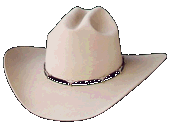Showing posts with label Science; Technology; Innovations 1. Show all posts
Showing posts with label Science; Technology; Innovations 1. Show all posts
Monday, March 12, 2007
Space Odyssey - Voyage to the Planets - Part 2 of 2
"Seen through the eyes of five astronauts on a six-year mission to explore the new frontiers of the solar system, it reveals the spectacle - and the dangers - they face when landing on, and exploring, neighbouring worlds."
Life on Earth - Episode 06 - The Swarming Hordes
"The sixth episode describes the move from water to land. The fish that did so may have been forced to because of drought, or chose to in search of food. Either way, they eventually evolved into amphibians. Such creatures needed two things: limbs for mobility and lungs to breathe. The coelacanth is shown as a fish with bony fins that could have developed into legs, and the lungfish is able to absorb gaseous oxygen. However, evidence of an animal that possessed both is presented in the 450 million-year-old fossilised remains of a fish called a eusthenoptron. Three groups of amphibians are explored. The sicilians have abandoned legs altogether to aid burrowing, newts and salamanders need to return to the water to allow their skins to breathe, but it is frogs and toads that have been the most successful. Attenborough handles a goliath frog, the largest of the species, to demonstrate its characteristics. Their webbed feet form parachutes that turn them into "dazzling athletes", and some can leap over 15 metres — 100 times their body length. In addition, their vocal sacs ensure that mating calls can be heard from up to a mile away. Poison dart frogs deter predators by means of venom, and one such example could kill a human. Various methods of breeding are examined, including laying eggs in rivers, depositing them in other damp habitats for safety or, as with the Brazilian pipa, embedding them within the skin of the parent itself."
Sunday, March 11, 2007
Life on Earth - Episode 05 - The Conquest of the Waters
"The fifth episode looks at the evolution of fish. They have developed a multitude of shapes, sizes and methods of propulsion and navigation. The sea quirt, the lancelet and the lamprey are given as examples of the earliest, simplest types. Then, about 400 million years ago, the first back-boned fish appeared. The Kimberley Ranges of Western Australia are, in fact, the remnants of a coral reef and the ancient seabed. There, Attenborough discovers fossils of the earliest fish to have developed jaws. These evolved into two shapes of creature with cartilaginous skeletons: wide ones (like rays and skates) and long ones (like sharks). However, it is the fully boned species that were most successful, and spread from the oceans to rivers and lakes. To adapt to these environments, they had by now acquired gills for breathing, a lateral line to detect movement and a swim bladder to aid buoyancy. Coral reefs contain the greatest variety of species, many of which are conspicuously coloured to ward off predators or attract mates. Their habitat, with its many hiding places within easy reach, allows them to remain so visible. However, the open ocean offers no such refuge, so there is safety in numbers — both hunters and hunted swim in shoals and have streamlined bodies for pursuit or escape. Most species that live below the thermocline, in the freezing depths of the ocean, have never been filmed, and these are largely represented by still photographs."
Friday, March 09, 2007
Gene Memory
"A startling examination, based on years of genetic research, on the role that ancestral genes play not just on our physical characteristics - but our psychological makeup as well." This brings a wholly new element into the nature versus nurture debate.
Thursday, March 08, 2007
Space Odyssey - Voyage to the Planets - Part 1 of 2
"Imagine crashing through the acid storms of Venus, taking a space walk in the magnificent rings of Saturn, or collecting samples on the disintegrating surface of an unstable comet."
Wednesday, March 07, 2007
Stephen Hawking's Universe - 1 - Seeing Is Believing
"Where did we come from? The history of cosmology from flat earth to Big Bang: Eratosthenes and Ptolemy, Copernicus, Kepler, Galileo, Newton, Edwin Hubble."
Monday, March 05, 2007
Sunday, March 04, 2007
Life on Earth - Episode 04 - The Swarming Hordes
"This fourth episode details the relationship between flowers and insects. There are some one million classified species of insect, and two or three times as many that are yet to be labeled. Around 300 million years ago, plants began to enlist insects to help with their reproduction, and they did so with flowers. Although the magnolia, for instance, contains male and female cells, pollination from another plant is preferable as it ensures greater variation and thus evolution. Flowers advertise themselves by either scent or display. Some evolved to produce sweet-smelling nectar and in turn, several insects developed their mouth parts into feeding tubes in order to reach it. However, to ensure that pollination occurs, some species — such as the orchid — have highly complicated mechanisms that must be negotiated first. Others, such as the yucca and its visiting moths, are dependent on one another. Hunters, such as the mantis, are camouflaged to match the flowers and leaves visited by their prey. Since an insect’s skin is chitinous, it has to shed it periodically in order to grow, and the caterpillar, its chrysalis or cocoon and resulting butterfly or moth is one of the more complex examples. Termites, ants and some bees and wasps overcame any limitations of size by grouping together and forming superorganisms. The green tree ants of south-east Asia are shown to display the most extraordinary co-operation when building their nests."
A War On Science (Intelligent Design and Dover)
"There is a war going on against science and reason. The pseudoscience of "Intelligent Design" is attacking the Darwinian Theory of Evolution, and trying to inject God into science."
Saturday, March 03, 2007
Near Death Experience
"In the fall of 2003, The Learning Channel aired a non-copyright brand new British Broadcasting Corporation (BBC) production about NDEs entitled The Day I Died. IANDS Board members were immediately and powerfully impressed with the quality of the 45-minute program. It showed two in-depth case studies of NDErs—one in the U.K., the other in the U.S.; depicted the two most recent prospective NDE research studies—one in the U.K., the other in the Netherlands; interviewed the most outstanding NDE researchers worldwide; presented both skeptical and “believer” perspectives; and reenacted the most compelling case of veridical (verifiably accurate) perception in an NDE during radical surgery for a brain aneurysm. The production was completely up-to-date and covered virtually everything an inquiring mind needed for an informed and balanced introduction to the phenomenon of NDEs. In short, most, if not all, Board members considered it the best NDE production made to date—very close to “the ultimate NDE video.”"
Life on Earth - Episode 03 - The First Forests
"This third episode examines the earliest land vegetation and insects. The first plants, being devoid of stems, mainly comprised mosses and liverworts. Using both sexual and asexual methods of reproduction, they proliferated. Descended from segmented sea creatures, millipedes were among the first to take advantage of such a habitat and were quickly followed by other species. Without water to carry eggs, bodily contact between the sexes was now necessary. This was problematical for some hunters, such as spiders and scorpions, who developed courtship rituals to ensure that that the female didn't eat the male. Over time, the plants' cell walls strengthened and they grew taller. Ferns and horsetails were among the first such species. Insects then evolved wings to avoid climbing and the dragonfly (which once had a wingspan of 60 centimetres) is one of the most successful. The elaborate wingbeats of the damselfly are shown slowed down 120 times. Some plants, like the cycad enlisted the insects to transport pollen, while others, like the conifer, spread spores. Over a third of forests contain conifers and the giant sequoia of California is the largest living organism of any kind: it grows to a height of 112 metres. The conifer secretes resin to repair its trunk, and this survives as amber. Within it, insect specimens have been found that are 200 million years old. In fact, at this time, every insect known today was already in existence."
Thursday, March 01, 2007
Wednesday, February 28, 2007
Life on Earth - Episode 02 - Building Bodies
"This second episode explores the various sea-living invertebrates. In Morocco, the limestones are 600 million years old, and contain many invertebrate fossils. They fall broadly into three categories: shells, crinoids and segmented shells. The evolution of shelled creatures is demonstrated with the flatworm, which eventually changed its body shape when burrowing became a necessity for either food or safety. It then evolved shielded tentacles and the casings eventually enveloped the entire body: these creatures are the brachiopods. The most successful shelled animals are the molluscs, of which there are some 80,000 different species. Some are single-shelled such as the cowrie, while others are bivalves that include the scallop and the giant clam. One species that has remained unchanged for millions of years is the nautilus: it features flotation chambers within its shell, which in turn formed the basis for the ammonites. Crinoids are illustrated by sea lilies, starfish and sea urchins on the Great Barrier Reef. Segmented worms developed to enable sustained burrowing, and well preserved fossils are found in the Rocky Mountains of British Columbia. These developed into trilobites and crustaceans, and the horseshoe crab is shown nesting in vast numbers on Delaware Bay. While the rubber crab breeds in the sea, it is in all other respects a land animal and Attenborough uses it to exemplify the next evolutionary step."
Tuesday, February 27, 2007
Einstein's Unfinished Symphony
Caveat: Quoting Richard Dawkins: "When Einstein said 'Did God have a choice in creating the Universe?' he meant 'Could the universe have begun in more than one way?' 'God does not play dice' was Einstein's poetic way of doubting Heisenberg's indeterminacy principle. Einstein was famously irritated when theists misunderstood him to mean a personal God. But what did he expect? The hunger to misunderstand should have been palpable to him. 'Religious' physicists usually turn out to be so only in the Einsteinian sense: they are atheists of a poetic disposition. So am I. But, given the widespread yearning for that great misunderstanding, deliberately to confuse Einsteinian pantheism with supernatural religion is an act of intellectual high treason."
The Mystery of the Human Hobbit
"Is the hobbit a new human species or nothing more than a modern human with a crippling deformity? On the far-flung island of Flores, in the Indonesian archipelago, a team of archaeologists happened upon a tiny 18,000-year old skeleton. It was no more than a metre tall. They assumed they have found the remains of a young girl. But other signs suggested she was in fact much older. They had discovered one of the smallest human adults ever found."
Sunday, February 25, 2007
Life on Earth - Episode 01 - The Infinite Variety
"This episode begins in the South American rainforest, whose rich variety of life forms is used to illustrate the sheer number of different species. Since many are dependent on others for food or means of reproduction, David Attenborough argues that they couldn't all have appeared at once. He sets out to discover which came first, and the reasons for such diversity. He starts by explaining the theories of Charles Darwin and the process of natural selection, using the giant tortoises of the Galapagos Islands (where Darwin voyaged on HMS Beagle) as an example. Fossils provide evidence of the earliest life, and Attenborough travels a vertical mile into the Grand Canyon in search of them. By the time he reaches the Colorado River bed, the geological strata are 2,000 million years old — yet there are no fossils. However, the "right rocks" are found on the shores of Lake Superior in Canada, where wafer-thin slices of flint, called churt, reveal filaments of primitive algae. Also, the micro-organisms that flourish at Yellowstone Park in Wyoming appear to be identical to the Earth's oldest fossils. The evolution of single-celled creatures, from simple cyanophytes to more complex ciliates, and then from multi-celled sponges and jellyfish to the many variations of coral and its associated polyps, is discussed in detail. The fossilized remains of jellyfish are shown within the Flinders Ranges of Australia, and are estimated to be 650 million years old."
Saturday, February 24, 2007
Thursday, February 22, 2007
Last Days on Earth
"The world's top scientists describe seven riveting scenarios detailing the deadliest threats to humanity. Some can destroy the planet, others have the ability to render us extinct, and all have the power to destroy civilization. "Last Days on Earth" goes beyond science fiction to science fact. Using state-of-the-art visual effects, it will take viewers on a journey that is both breathtaking and terrifying, from the outer reaches of the universe to the inner world of DNA, with an around-the-globe tour in between."
Subscribe to:
Posts (Atom)











